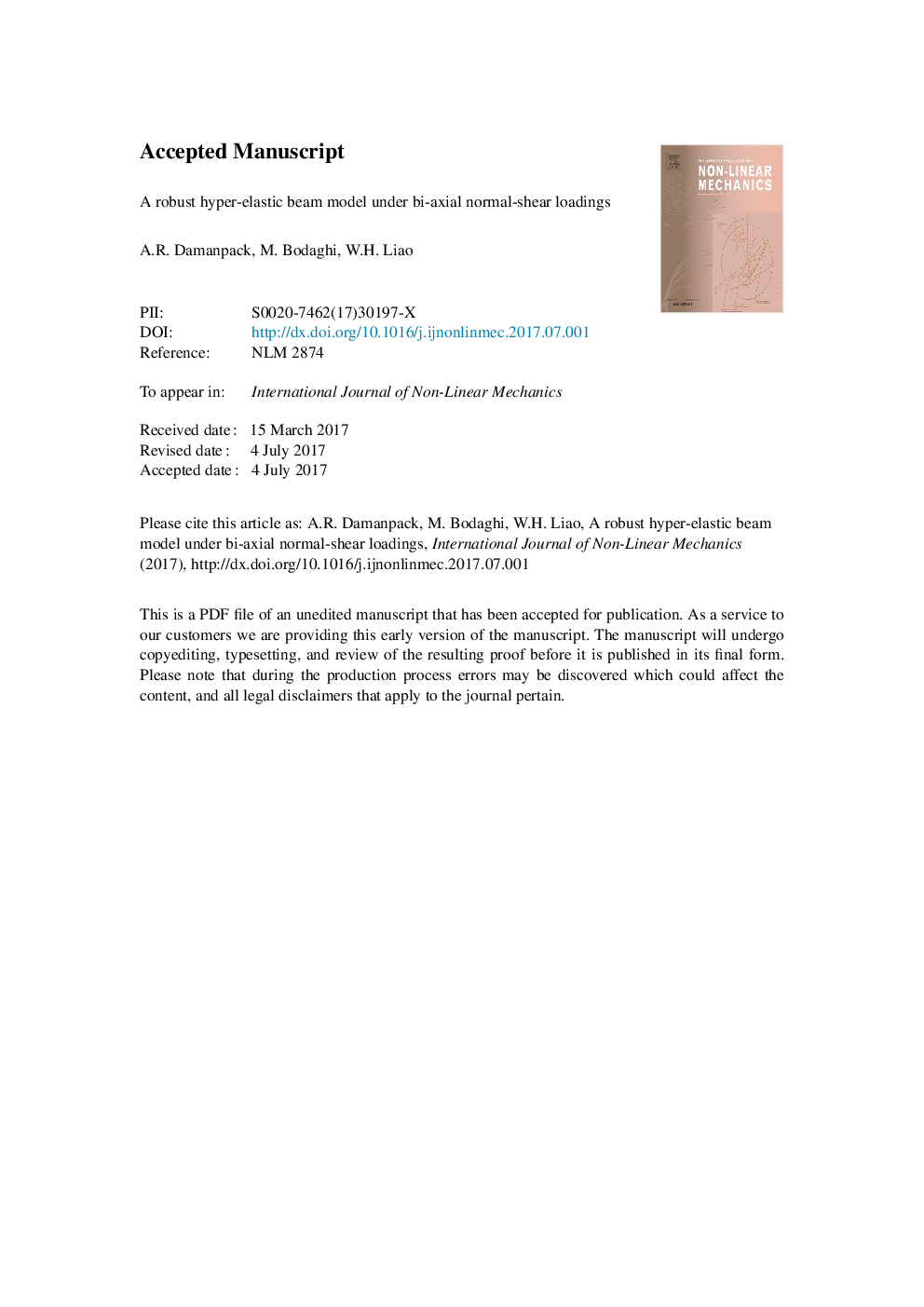| Article ID | Journal | Published Year | Pages | File Type |
|---|---|---|---|---|
| 5016513 | International Journal of Non-Linear Mechanics | 2017 | 48 Pages |
Abstract
In this paper, a simple and robust constitutive model is proposed to simulate mechanical behaviors of hyper-elastic materials under bi-axial normal-shear loadings in the finite strain regime. The Mooney-Rivlin strain energy function is adopted to develop a two-dimensional (2D) normal-shear constitutive model within the framework of continuum mechanics. A motion field is first proposed for combined normal and shear deformations. The deformation gradient of the proposed field is calculated and then substituted into right Cauchy-Green deformation tensor. Constitutive equations are then derived for normal and shear deformations. They are two explicit coupled equations with high-level polynomial non-linearity. In order to examine capabilities of the developed hyper-elastic model, uniaxial tensile responses and non-linear stability behaviors of moderately thick straight and curved beams undergoing normal axial and transverse shear deformations are simulated and compared with experiments. Fused deposition modeling technique as a 3D printing technology is implemented to fabricate hyper-elastic beam structures from soft poly-lactic acid filaments. The printed specimens are tested under tensile/compressive in-plane and compressive out-of-plane forces. A finite element formulation along with the Newton-Raphson and Riks techniques is also developed to trace non-linear equilibrium path of beam structures in large defamation regimes. It is shown that the model is capable of predicting non-linear equilibrium characteristics of hyper-elastic straight and curved beams. It is found that the modeling of shear deformation and finite strain is essential toward an accurate prediction of the non-linear equilibrium responses of moderately thick hyper-elastic beams. Due to simplicity and accuracy, the model can serve in the future studies dealing with the analysis of hyper-elastic structures in which two normal and shear stress components are dominant.
Related Topics
Physical Sciences and Engineering
Engineering
Mechanical Engineering
Authors
A.R. Damanpack, M. Bodaghi, W.H. Liao,
